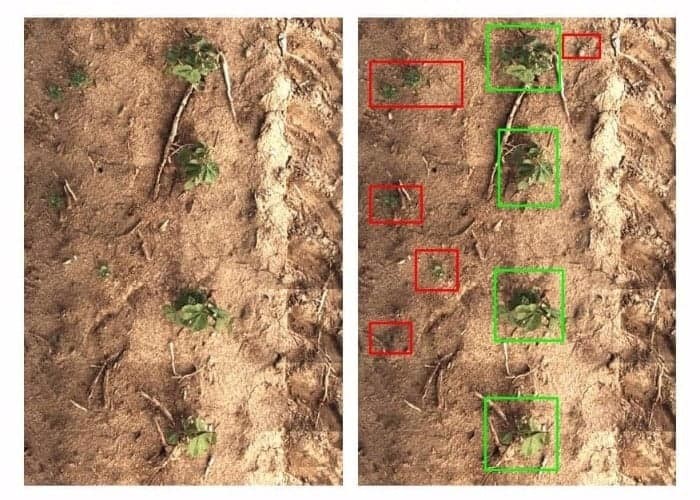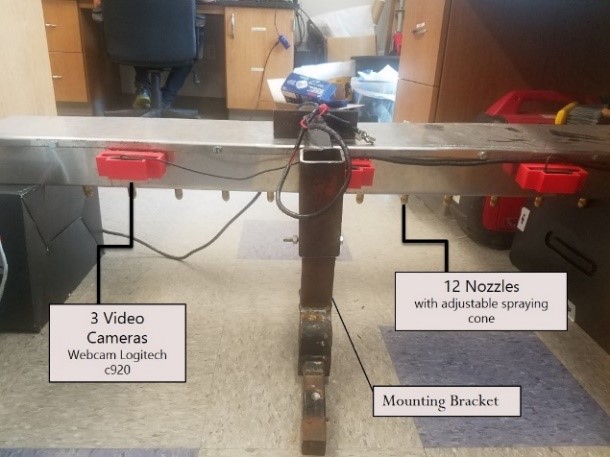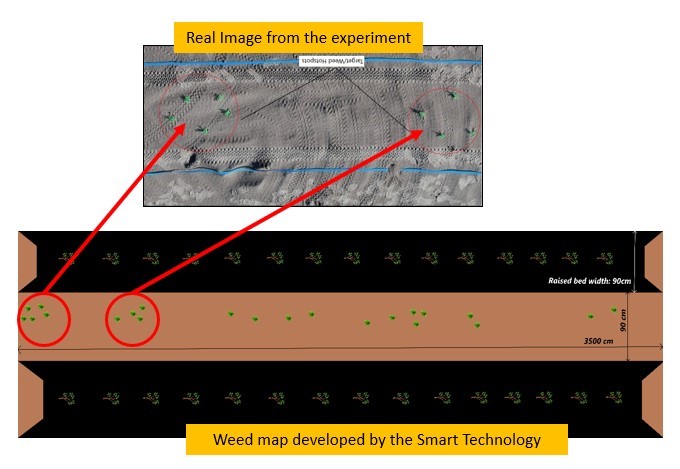By Yiannis Ampatzidis
Traditional broadcast sprayers usually treat the entire field to control pest populations, potentially resulting in unnecessary application to areas that do not require treatment. These sprayers apply agrochemicals uniformly, even though distribution of weeds is typically patchy. This results in wastage of valuable compounds, increased costs, crop damage risk, pest resistance to chemicals, environmental pollution and contamination of products.
For reducing these negative impacts, new sprayer technologies have shown a significant improvement in terms of efficiency and safety by adopting the latest advances in electronics, artificial intelligence (AI) and automation.
A smart sprayer system needs to be able to locate weed spots in real time and manage to spray the desired chemical only on the proper location. Additionally, these smart sprayers must detect and distinguish target weeds from non-target objects (e.g. vegetable crops) and precisely spray on the desired target/location. However, most agrochemicals (e.g. herbicides) in the United States are applied uniformly, despite the fact that distribution of target pests, pathogens and weeds is typically patchy. Uniform application wastes valuable agrochemicals by applying where little or no problems exist.

In recent decades, there has been rising interest in pest and disease detection as well as in automation of weed sprayers. H-Sensor (Agricon GmbH) and See and Spray (Blue River Technology) are recent commercial spraying technologies that utilize artificial intelligence and can distinguish between crop plants and various weeds. For example, the smart (precision) sprayer developed by Blue River Technology utilizes a vision-based system and AI to identify individual plants (e.g., cotton and wheat) and weeds, and sprays only on the weeds (Figure 1). This can significantly reduce the quantity of herbicide used, when compared with traditional broadcast sprayers.

Another smart technology for precision weed management in vegetables has been developed by the precision agriculture engineering team at the University of Florida Institute of Food and Agricultural Sciences (UF/IFAS) Southwest Florida Research and Education Center (SWFREC) (Figure 2). In a demonstration experiment, a sprayer was programmed to spray only on a specific weed (e.g., portulaca, Figure 2b) and not on the bare ground and/or on the crop or any other weeds/plants (e.g., pepper plant and sedge weed, Figure 2b). A video demonstration of this smart technology can be found on the SWFREC Precision Ag Program Twitter page (@PrecAgSWFREC, https://twitter.com/i/status/1045013127593644032).
This technology includes a real-time kinematic global positioning system and generates a weed/spray map at the end of each application (Figure. 3). A user-friendly graphical user interface (GUI) was developed to control this low-cost (less than $2,000) technology and for real-time visualization of the collected data (e.g., number and location of the collected weeds) A video demonstration of the GUI can also be found on the Twitter page (https://twitter.com/i/status/1070774476445499397).

These technologies can be used to simultaneously scout for a variety of weeds and spray with different herbicides on specific type of weeds (e.g., grass, broadleaf and other). They have a real potential to deliver more productive and sustainable agriculture, based on a more precise and cost-efficient approach, especially in a scenario of farming labor shortage and climate change. Using these technologies, chemical applicators will be better equipped to apply the right amount of agrochemicals only where needed. This will result in decreased chemical use and expenses while reducing potential environmental impacts. These technologies provide a unique opportunity for developing intelligent agricultural systems for precision applications.
Editor’s note: UF/IFAS scientists at the Gulf Coast Research and Education Center and the Citrus Research and Education Center are also working on a smart sprayer for crops grown on plastic mulch. Read about their research in “Smart sprayer technology for better weed control” in the March 2019 issue of VSCNews magazine.
Yiannis Ampatzidis is an assistant professor at the UF/IFAS SWFREC in Immokalee.
This article was featured in the August issue of VSCNews magazine. To receive future issues of VSCNews magazine, click here.









